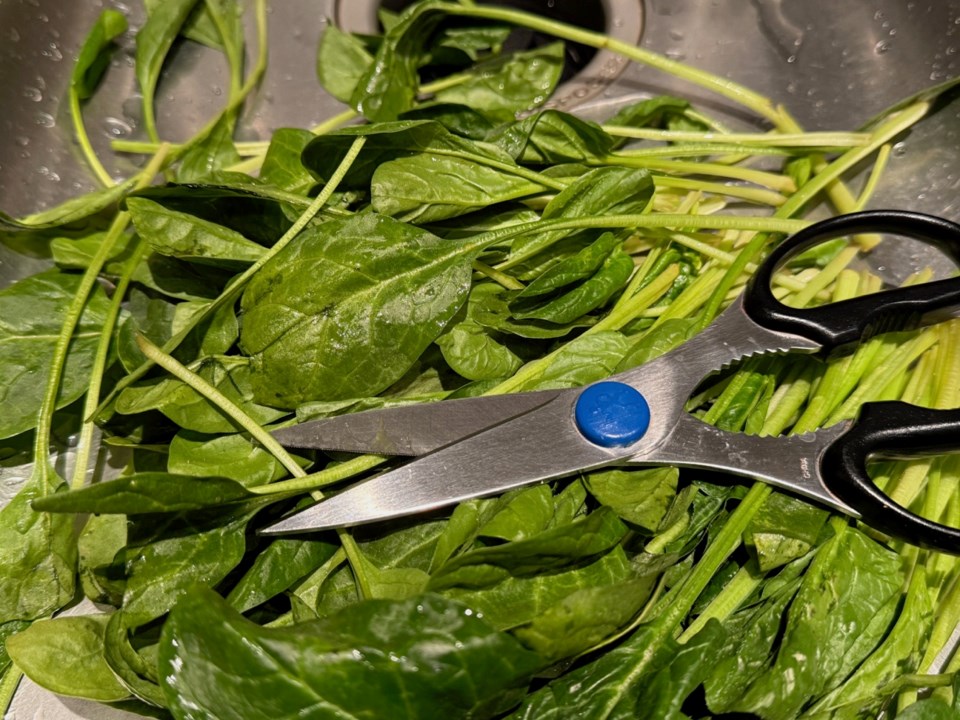Once upon a time, 101 years ago, hubbie and I were landlords. (Note to self: Don’t do that again.) One of our more “exceptional” tenants, and I use the term loosely, ahem, did a runner with two months’ rent owing and half his worldly goods left behind for us to dump, clean, or otherwise deal with.
We found good homes for most of his stuff, but one thing I adopted during the process was a good pair of kitchen scissors.
Before going to—and during—journalism school, otherwise known as j-school in the biz, I’d worked in many a restaurant and pub, posh and otherwise, where, incidentally, I regularly earned more in tips alone working part-time than I did at my first full-time-plus reporter’s job at the Whistler Question. In fact, two short shifts and one eight-hour one a week nicely paid my way through life the whole time I was at j-school.
So I’d seen many a professional chef put kitchen scissors to good use over the years, and I bet Mr. Runner had, too, since he’d come from a pub/resto background. But I’d never owned any.
I always thought kitchen scissors were kind of affected. You know, something precious for obsessive chefs on cooking shows who have nothing else to do with their lives.
But those sturdy Henckels kitchen scissors have served us well over the years, thank you very much, clipping and nipping a wide range of things, including fresh flower stems which I cut back an inch or so at a 45-degree angle to encourage them to suck up more water in a vase. (I’m pretty good at getting two-plus weeks out of a bouquet, nipping those stems one inch at a time every few days. Don’t forgot to change the water at the same time, and those gorgeous Easter tulips or daffies you got will last way longer.)
Kitchen scissors are also great for cutting open all those ridiculous, over-the-top sealed plastic bags of frozen veggies or even cereal packaging that you can’t, for the life of you, tear open any more with your bare hands, driving you to seriously consider a flame thrower. (My amazing 96-year-old mom, who still lives independently, first alerted me to that one. She thought she simply didn’t have the strength left in her hands to do it. But that’s only part of the problem. Even hubbie and I can’t do it!)
Kitchen scissors are faster, more agile and safer than a paring knife for doing it all. They smoothly nip off clumps of grapes to serve to your pals. Ditto cutting away what you do and don’t want when it comes to carrot tips and tops; green beans snipped to size; and prepping parsley, cilantro, lettuce, you name it. All bow before good kitchen scissors.
But I had to really stop and reflect the other day when I caught myself actually carving away the bad bits on fresh spinach leaves using those scissors to follow the structure of the leaves themselves, for that’s how the blackness tracked. When I did that, most of the leaf was saved.
If you read this column regularly, you’ll know I’ve written about all the rotten implications of food waste more than once over the years. (Just search my name, with “Pique” and “waste” and you’ll get all kinds of hits, like “Spring for sufficiency, and the satisfaction it brings” from March 2022 or “Is that melon really a good buy?” from July 2023, and, most recently, “Waste—not wanted,” from earlier this year.)
The facts are there, in black and white. I won’t bore you with them all, but suffice to say the RMOW estimates about one third of the waste generated in Whistler is food waste! One UN report says the average Canadian wastes about 79 kilograms of food a year. In sub-Saharan Africa and South and Southeast Asia, that number is under 11 kg. But the real zinger is that food (and yard) waste generates methane, which is 20 times more potent than carbon dioxide in trapping the sun’s heat around our fair Earth.
Food waste ain’t some kind of namby-pamby thing we fortunate, privileged ones get to toss out like it’s nothing.
And as I was having fun creatively cutting away the black-ish bits from those spinach leaves, generating the tiniest blob of waste in the compost bucket, I suddenly flashed back to my 19-year-old self, cooking for the first time after I left home. I’m sure I would have blithely tossed away a quarter of that bunch of spinach because I would have simply tossed the entire infected leaf away. Leaf after leaf after leaf. Even if only a wee part was “bad.”
Spring has finally sprung in this neck of the woods, and with it will come ever more and ever nicer produce—yes, from our local famers, eventually, but primarily from California and Mexico.
I often think of all the amazing prairie farmers and B.C. orchardists in our family circle, past and present. All the time, work and effort they and millions of others like them put into growing our food. And I think of all the effort—and the fuel and carbon emissions burned—to truck it to our grocery stores. But first I think of the effort and resources nature itself puts in, pumping all that goodness into our produce, one tiny leaf after another, after another.
The very least I, or any of us, can do is change up our habits. I recommend trying a very handy pair of kitchen scissors to carve away any wee bits of bad and save the greater good.
Glenda Bartosh is an award-winning journalist who knows one pair of scissors won’t save the planet, but it’s an easy, thoughtful place to start.




